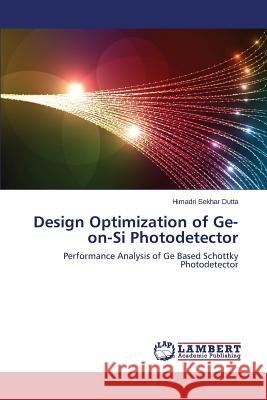Design Optimization of Ge-on-Si Photodetector » książka
Design Optimization of Ge-on-Si Photodetector
ISBN-13: 9783659513886 / Angielski / Miękka / 2014 / 140 str.
In recent years, extensive researches are going on high-speed low-noise photodetectors for optical communication. A photodetector plays a critical role in the overall performance of the system. III-V based photodetectors for high-performance communication system have already been reported.But, the technology is very expensive.Si is an obvious choice in such cases.Si technology has also the advantage of high reliability and high integrability. However, Si band-gap is not suitable for photodetection around the long-haul communication wavelength.Ge is a good candidate for designing such photodetectors(PD), given its smaller direct energy band-gap, and compatibility with Si. Si and Ge can also be combined to design PD at variable wavelengths.Here a physics based model is developed and then solved analytically or numerically by the appropriate initial and boundary conditions. The simulated results are then be verified with experimental data. The various performance of the PD are studied here. Finally the design optimization are carried out by choosing an appropriate objective function.This book is very much useful for Ph.D, M.Tech and B.Tech students of ECE branc
In recent years,extensive researches are going on high-speed low-noise photodetectors for optical communication. A photodetector plays a critical role in the overall performance of the system. III-V based photodetectors for high-performance communication system have already been reported.But,the technology is very expensive.Si is an obvious choice in such cases.Si technology has also the advantage of high reliability and high integrability. However, Si band-gap is not suitable for photodetection around the long-haul communication wavelength.Ge is a good candidate for designing such photodetectors(PD),given its smaller direct energy band-gap,and compatibility with Si. Si and Ge can also be combined to design PD at variable wavelengths.Here a physics based model is developed and then solved analytically or numerically by the appropriate initial and boundary conditions. The simulated results are then be verified with experimental data. The various performance of the PD are studied here. Finally the design optimization are carried out by choosing an appropriate objective function.This book is very much useful for Ph.D, M.Tech and B.Tech students of ECE branch.











